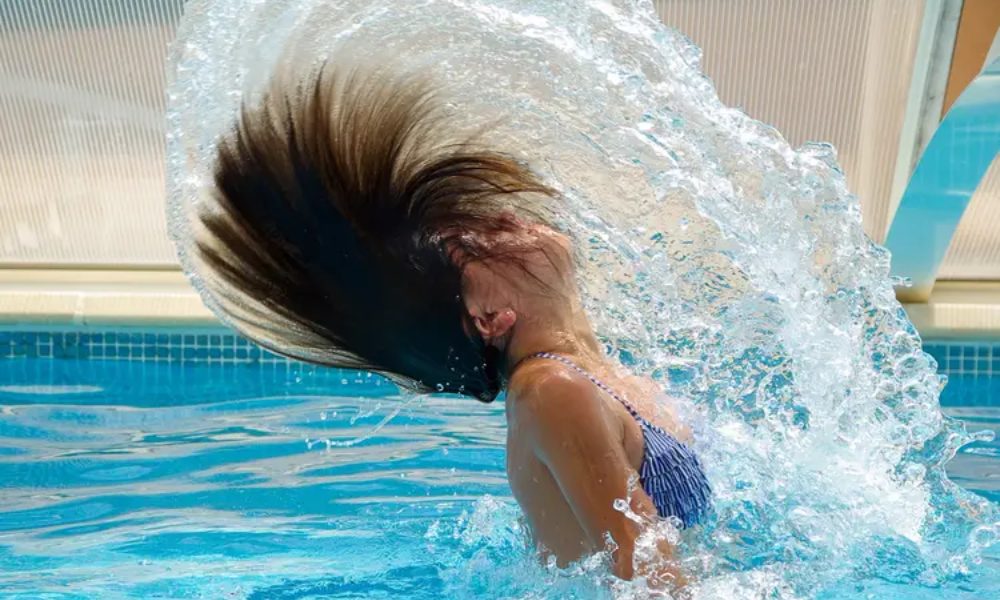Chlorine In Swimming Pools: Be Very Careful When Bathing In Them
Although we are in a somewhat atypical summer as a result of the Covid-19 pandemic, heat and swimming pools are two concepts that travel together when high temperatures arrive and with this one more year, mainly problems arise again on the skin and eyes. Derived from the presence of chlorine in the water of public and private swimming pools.
Are high chlorine levels safe to swim in? Chlorine is a chemical element that appears in the Periodic Table integrated in the group of halogens and has the atomic number 17. In nature, chlorine is present in salt mines and dissolved in seawater in the form of chloride. Sodium, chlorites and chlorates, although in swimming pools it is used artificially to disinfect the water quickly and effectively from all kinds of germs.
One of the negative points of chlorine is that it is a substance with highly irritating capacities; hence it is necessary to warn that in high concentrations it can cause damage to the respiratory tract, a faculty that during the First World War earned it its use as a chemical weapon in the form of chlorine gas (Bertholite).
Without going so far in swimming pools, chlorine is used in a range that ranges between 1 and 3 parts per million, making it mandatory for the technicians in charge of its maintenance to check the facilities twice a day in order to control the pH of the water ( degree of acidity), the levels of chlorine and the temperature of the water, which for our well-being should preferably be around 25ºC.
Why does chlorine damage the skin?
There is a false belief that chlorine is to blame for the skin on our hands and feet to wrinkle when we spend a long time in the water, but although it is true that chlorine punishes and dries out the epidermis a lot, in the case of typical wrinkles it must be said that chlorine has little or nothing to do with it.
The skin has a layer of protective fat that ensures that moisture does not penetrate it, a layer that is curiously thicker on the hands and feet. When this layer disappears due to the effect of water, the skin tends to absorb water, mainly in the hands and feet, a circumstance that is the cause of the appearance of the usual wrinkles.
In addition, chlorine can also cause chemical reactions in the skin that lead to irritation, swelling or loss of melamine, especially when it comes to sensitive or atopic skin. When this happens, it will be necessary to suspend the baths and previously consult with the corresponding doctor when these types of symptoms appear.
On the other hand, we must bear in mind that the pH of our skin is 5.5 and that of pool water can range between 7.2 and 7.8, a higher degree of acidity by which the Chlorine acts negatively on the external part of our body.
Eye and ear problems from chlorine
In swimming pools it is advisable to bathe with the protection of swimming goggles, which will prevent chlorine from reaching our eyes, causing damage to them, and in no case open our eyes inside water treated with chlorine, since the dryness and eye irritations may appear after 20-30 minutes.
Warn that in some cases eye problems can go beyond a simple irritation, which as a rule will disappear with the passing of hours, because the combined presence of chlorine and certain bacteria can lead to infectious conjunctivitis and keratocojunctivitis, a pathology this last one that supposes an inflation of the cornea and the conjunctiva due to lack of sufficient hydration in the eye.
In the ears, water, whether chlorinated or non-chlorinated, can cause external otitis (swimmer’s ear), which is caused by the fact that the liquid remains inside the ear canal for long periods of time, hence that it is advisable to use plugs and to dry the ears perfectly after bathing.
Can I get infected in chlorinated water?
Previously, we have commented on the disinfectant characteristics that chlorine brings to swimming pool water, so it is misunderstood that germs can remain in the water. The explanation has two perspectives, one the existence of the so-called “window effect”, which is the time that elapses between the water being treated and the chlorine reaching its maximum disinfectant level, and another would be that there are bacteria resistant to chlorine and that they can even “live” up to ten days in our swimming pools.
In addition, the presence of organic fluids such as sweat, saliva or urine in the water causes the water to react with urea, ammonia and keratinize, giving rise to a new substance, chloramine, which in many cases is responsible for problems eye and respiratory.
Precisely for this reason it is advisable to shower before and after entering the pool, in the first case to remove sweat and other debris and in the second to clean the remains of chlorine and any other substance that may have impregnated our skin, eyes and mucous membranes.
Finally, chlorine is also not to blame for the fact that blonde hair can appear at some point with greenish tones, because this is due to the action of the sun and the oxidation of certain metals, such as copper and iron, which are also present in the water, although chlorine does cause hair dryness and nail damage in especially sensitive people.

